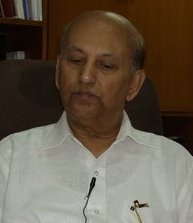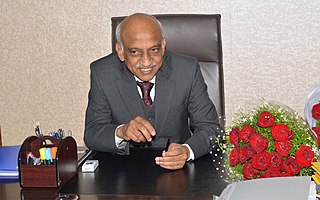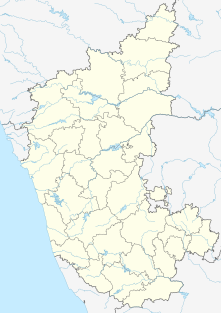
The Indian Space Research Organisation is the space agency of the Government of India headquartered in the city of Bengaluru. Its vision is to "harness space technology for national development while pursuing space science research and planetary exploration." Indian National Committee for Space Research (INCOSPAR) was established under the DAE in 1962 by the efforts of scientist Vikram Sarabhai recognizing the need in space research. INCOSPAR grew into ISRO in 1969 also under the DAE. In 1972 Government of India setup a Space Commission and the Department of Space (DOS), bringing ISRO under the DOS. The establishment of ISRO thus institutionalized space research activities in India. It is managed by the Department of Space, which reports to the Prime Minister of India.

Chandrayaan-1 was India's first lunar probe. It was launched by the Indian Space Research Organisation in October 2008, and operated until August 2009. The mission included a lunar orbiter and an impactor. India launched the spacecraft using a PSLV-XL rocket, serial number C11, on 22 October 2008 at 00:52 UTC from Satish Dhawan Space Centre, at Sriharikota about 80 km (50 mi) north of Chennai. Prime Minister Atal Bihari Vajpayee announced the project on course in his Independence Day speech on 15 August 2003. The mission was a major boost to India's space program, as India researched and developed its own technology in order to explore the Moon. The vehicle was inserted into lunar orbit on 8 November 2008.

Krishnaswamy Kasturirangan is an Indian space scientist who headed the Indian Space Research Organisation (ISRO) from 1994 to 2003. He is presently Chancellor of Central University of Rajasthan. He is the former chancellor of Jawaharlal Nehru University and the chairman of Karnataka Knowledge Commission. He is a former member of the Rajya Sabha (2003–09) and a former member of the now defunct Planning Commission of India. He was also the Director of the National Institute of Advanced Studies, Bangalore, from April 2004 to 2009. He is a recipient of the three major civilian awards from the Government of India: the Padma Shri (1982), Padma Bhushan (1992) and Padma Vibhushan (2000).

Udupi Ramachandra Rao was a space scientist and chairman of the Indian Space Research Organisation. He was also the Chairman of the Governing Council of the Physical Research Laboratory at Ahmedabad and Nehru Planetarium at Bengaluru and chancellor of the Indian Institute for Space Science and Technology (IIST) at Thiruvananthapuram. He is affectionately called 'Satellite man of India'.

Mylswamy Annadurai is an Indian scientist working as Vice president for Tamil Nadu State Council for Science and Technology([TNSCST]) . Prior to taking this assignment he was with Indian Space Research Organisation and served as Director, ISRO Satellite Centre(ISAC), Bangalore.. During his 36 years of service in ISRO he had some of the major contributions including two of the major missions of ISRO namely [Chandrayaan-1] and [Mangalyaan]. Annadurai has been listed among 100 Global thinkers of 2014 and topped the innovators list. Annadurai and his works are mentioned in 10th standard Science Text Book of Tamil Nadu.

G. Madhavan Nair is the former Chairman of Indian Space Research Organisation and Secretary to the Department of Space, Government of India. He has also been the Chairman of the Space Commission and Chairman of the Governing Body of the Antrix Corporation, Bangalore. He was Chairman of the Board of Governors of the Indian Institute of Technology Patna until he stepped down due to his involvement in a controversial deal relating to sale of radio spectrum bandwidth involving Antrix. He was subsequently barred from holding any government positions.
The ISRO Satellite Centre (ISAC) is the leading centre of ISRO for design, development, fabrication and testing of all Indian made satellites. It was established in the year of 1972 as Indian Scientific Satellite Project (ISSP) in Peenya Industrial Estates of Bengaluru. ISAC has been renamed as U. R. Rao Satellite Centre (URSC) after the former ISRO Chairman and ISAC founding Director Dr. Udupi Ramachandra Rao with effect from 2nd April 2018.
The Rajyotsava Prashasti or Rajyotsava Awards, the second highest civilian honor of the Karnataka state of India are conferred annually by the Karnataka Government on the occasion of the establishment of the state on 1 November celebrated as the Kannada Rajyotsava.

Indian Deep Space Network (IDSN) is a network of large antennas and communication facilities operated by the Indian Space Research Organisation to support the interplanetary spacecraft missions of India. Its hub is located at Byalalu, a village about 25 kilometres (16 mi) from Bangalore, India. It was inaugurated on 17 October 2008 by the former ISRO chairman G. Madhavan Nair. The main tracking antenna was designed and commissioned by Hyderabad-based Electronics Corporation of India Limited at a cost of ₹65 crore.
Chandrayaan-2 is India's second lunar exploration mission after Chandrayaan-1. Developed by the Indian Space Research Organisation (ISRO), the mission is planned to be launched to the Moon by a Geosynchronous Satellite Launch Vehicle Mark III. It includes a lunar orbiter, lander and rover, all developed by India.

Koodli Nanjunda Ghanapathi Shankara was a space scientist from India. He was the Director of ISRO's Space Applications Centre (SAC), Ahmedabad and ISRO Satellite Centre (ISAC), Bangalore and is now working as a senior scientist in ISAC. He was the Director of Satellite Communications Program Office and Program Director, INSAT, and was looking after overall planning and direction of communication satellite program. His work in the field of transponder design and development led to a boost in India's communication satellite technology.

Koppillil Radhakrishnan is an Indian space scientist who headed the Indian Space Research Organisation (ISRO) between November 2009 and December 2014 as Chairman of Space Commission, Secretary of the Department of Space and Chairman of ISRO. Prior to this, he was the Director of Vikram Sarabhai Space Centre (2007-2009) and Director of National Remote Sensing Agency (2005-2008) of the Department of Space. He had a brief stint of five years (2000-2005) in the Ministry of Earth Sciences as Director of Indian National Centre for Ocean Information Services (INCOIS).
Thekkethil Kochandy Alex is an Indian space scientist. He was the director of the ISRO Satellite Centre (ISAC) of Indian Space Research Organisation (ISRO) (2008–2012) and Member, Space Commission. He specialized in electro-optic systems and satellite technology. Starting with the first Indian satellite Aryabhata he has been responsible for the sensor systems in all the Indian satellites. Under his leadership the Laboratory for Electro Optics Systems (LEOS) was established in 1993 and from the inception he was its director till 2008. He was conferred "Dr. Vikram Sarabhai Distinguished Professorship" in 2011.

S. Nambi Narayanan is an Indian scientist and aerospace engineer and Padma Bhushan award winner. As a senior official at the Indian Space Research Organisation (ISRO), he was in-charge of the cryogenics division. In 1994, he was falsely charged with espionage and arrested. The charges against him were dismissed by the Central Bureau of Investigation (CBI) in 1996, and the Supreme Court of India declared him not guilty in 1998.
M.Y.S. Prasad is an Indian scientist and the former director of the Satish Dhawan Space Centre Sriharikota Range (SDSC-SHAR). He is currently serving as the Vice-Chancellor in India's one of the top private university, Vignan's University located in Guntur district of Andhra Pradesh.

Aluru Seelin Kiran Kumar is an Indian space scientist and former chairman of the Indian Space Research Organisation, having assumed office on 14 January 2015. He is credited with the development of key scientific instruments aboard the Chandrayaan-1 and Mangalyaan space crafts. In 2014, he was awarded the Padma Shri, India's fourth highest civilian award, for his contributions to the fields of science and technology. Kiran Kumar previously served as Director of Ahmedabad Space Applications Centre.
M. Annamalai, from the South Indian state of Karnataka, is a space scientist. He is a former director of the Satish Dhawan Space Centre, in Sriharikota and holds the position of the Senior Advisor at ISRO.
Nilamber Pant is an Indian space scientist, a former member of the Space Commission of India and a pioneer of satellite based communication and broadcasting in India. He served at the Satish Dhawan Space Centre and the ISRO Satellite Centre before becoming the vice chairman of the Indian Space Research Organization (ISRO). The Government of India awarded him the fourth highest Indian civilian honour of Padma Shri in 1984.














